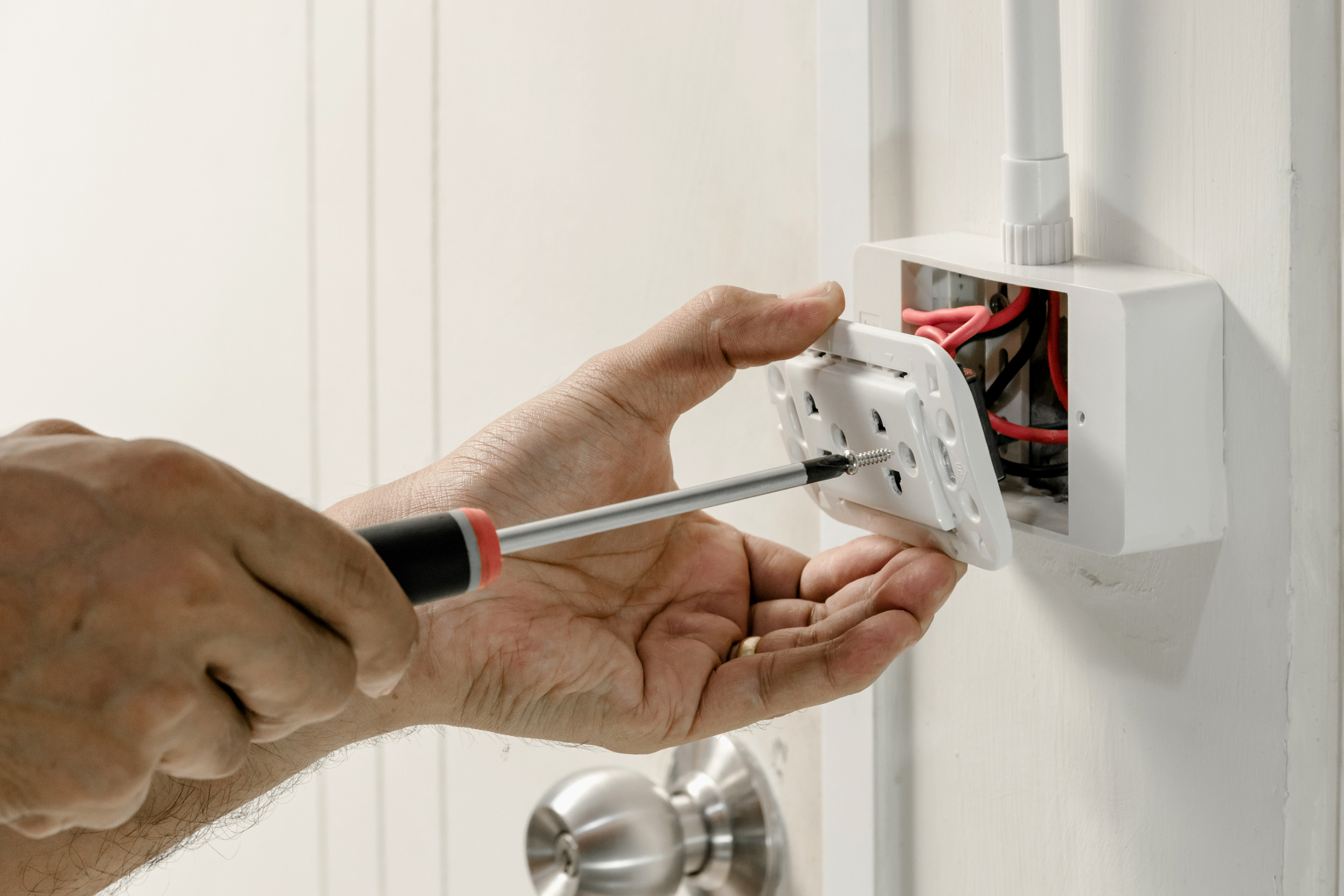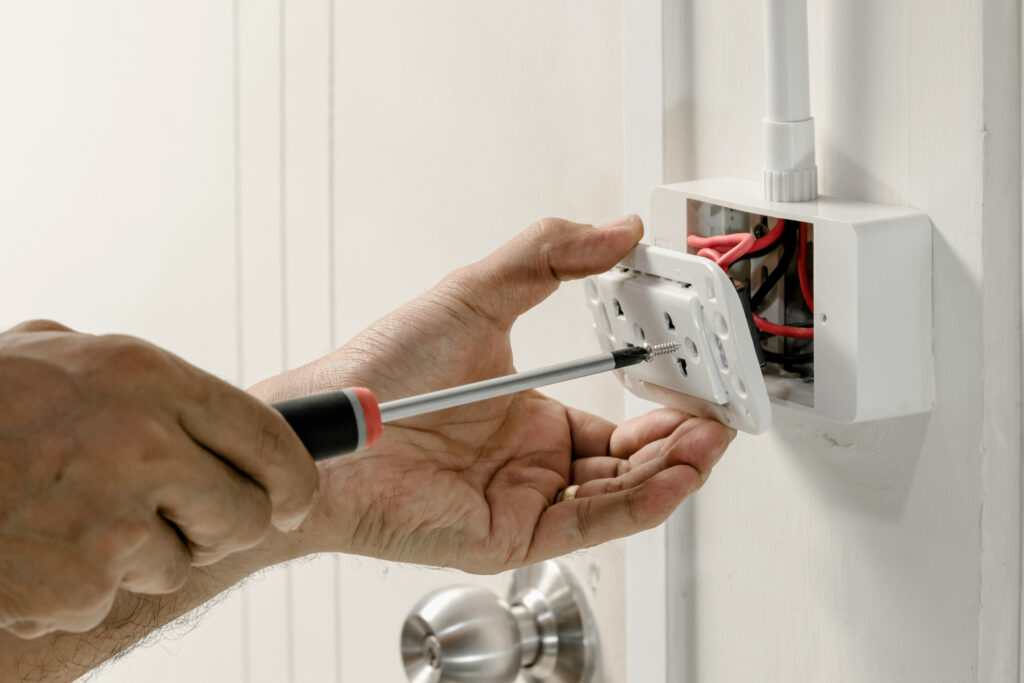Understanding Outlet Regulations: What Every Business Needs to Know


Electrical outlet (or receptacle) regulations might seem dry, but when it comes to safety, compliance, and preventing costly mistakes, they’re absolutely critical. At Owl Power Solutions, we believe in power done right — safe, code-compliant, and dependable. This blog walks you through key outlet regulations (especially from the NEC / federal codes), what they mean for businesses, schools, medical facilities, etc., and how following them properly protects your people, your property, and your reputation.
What Outlet / Receptacle Regulations Are We Talking About?
Here are some of the main regulatory sources and code sections that govern outlet placement, type, and safety requirements:
- The National Electrical Code (NEC) (NFPA 70) — this is the main model code used across most U.S. jurisdictions.
- Federal requirements (e.g. manufactured home standards, HUD regulations) — e.g. 24 CFR § 3280.806, which governs receptacle outlets for manufactured homes. Legal Information Institute+1
- Local adaptations or amendments — many states or cities adopt the NEC but may add stricter rules.
Key NEC / Federal Requirements You Should Know
Here are some of the biggest rules that businesses, schools, medical facilities, or other building managers need to be aware of:
| Regulation / Code | What It Requires | Why It Matters |
| Grounding Type Receptacles (e.g. 15-amp, 125-volt duplex or single outlets) | Receptacles must be grounding type (three-prong) unless for certain specific appliances. Legal Information Institute+1 | Prevents shock hazards, protects equipment, avoids liability from non-grounded outlets. |
| GFCI Protection | Many outlets in certain locations (bathrooms, outdoors, near sinks, kitchens, laundry areas, etc.) must have GFCI protection. The 2023 NEC expanded GFCI locations, including proximity to sinks and expanded definitions of kitchen. ExpertCE+2zenithinspect.com+2 | Prevents harm from ground faults (water contact, moisture) which are common in those areas. Very important for reducing injury risk. |
| Spacing / Placement of Outlets | Outlets must be placed so that no point along the wall (floor line) is more than 6 feet horizontally from an outlet. Countertops need outlets spaced properly. Islands or peninsulas may have special requirements. ECM Web+2City of Fort Collins+2 | Ensures reasonable access without needing extension cords, which are often a trip hazard and can violate code. Also helps with functionality of workspaces. |
| Dedicated Circuits vs Shared | Some appliances (e.g. laundry, refrigerator, etc.) require dedicated branch circuits, or certain rooms require small appliance branch circuits. Larger loads, motors, etc. require adequate rated circuits. Legal Information Institute+2ECM Web+2 | Prevents overloads, overheating, fire risk. Ensures appliances have enough capacity and reduces nuisance tripping. |
| Tamper-Resistant and Safety Labeling Requirements | In many codes, receptacles in dwellings or facilities frequented by public (e.g. schools) must have tamper-resistant outlets. Replacements must meet current standards. Also outlets must be properly mounted, housed, labeled, etc. zenithinspect.com+1 | Protects children, prevents accidental insertion of foreign objects, ensures stable installation, reduces risk of electrical failure. |
Why Regulations Matter: Real Risks of Non-Compliance
Failing to follow these rules can lead to major issues:
- Safety Hazards
Non-GFCI protected outlets near water sources can lead to shock or electrocution. Poorly grounded or overloaded circuits can start fires. - Legal / Regulatory Penalties
Building, health, fire, or safety inspectors may issue violations. For medical facilities and schools, violating electrical code can also violate licensing, insurance, or accreditation requirements. - Insurance Problems
If an incident (a fire, injury, etc.) occurs and it is determined that the electrical outlets or wiring didn’t comply with code, claims may be denied or limited. - Operational Disruptions
Outlets that are improperly placed, overloaded, or unsafe get bypassed, overloaded, or avoided. That can reduce productivity, create safety shortcuts (extension cords, unsafe wiring), or cause equipment failures. - Costly Retrofits
Correcting code violations after construction or during an inspection is almost always more expensive than planning for them up front.
How Owl Power Solutions Helps You Stay Compliant & Safe
At Owl Power Solutions, our goal is not just to provide outlets with emergency backup lighting; it’s to ensure your electrical systems are safe, code-compliant, durable, and tailored to your facility’s real use.
What You Should Do Now: Checklist for Businesses, Schools, Medical Facilities
To make sure you’re covered, here are steps you should take:
- Review your local code adoption (which NEC version, local amendments).
- Walk through your facility with an electrician and spot outlets in wet areas, outdoors, high-use zones. Are they GFCI protected? Grounded? Properly spaced?
- Check if appliance loads require dedicated circuits.
- For older buildings, check if tamper-resistant and modern safety features are present.
- Include outlet inspection as part of safety audits.
Outlet regulations might seem like small details — but they’re foundation stones for safety, reliability, and legal compliance. At Owl Power Solutions, we believe every outlet matters: grounded properly, placed thoughtfully, protected intelligently.
- Why Emergency Backup Lighting Matters Most During the Winter Months - November 27, 2025
- Understanding Outlet Regulations: What Every Business Needs to Know - October 24, 2025
- Backup Emergency Lighting: A Critical Safety Measure by Owl Power Solutions - September 10, 2025
